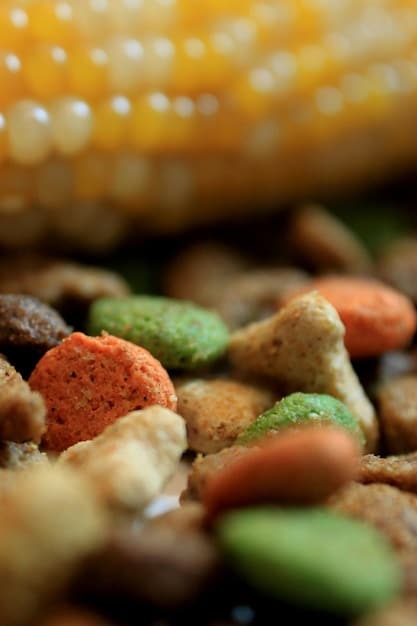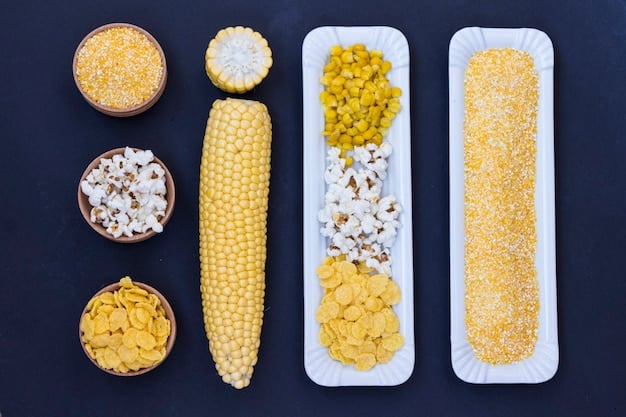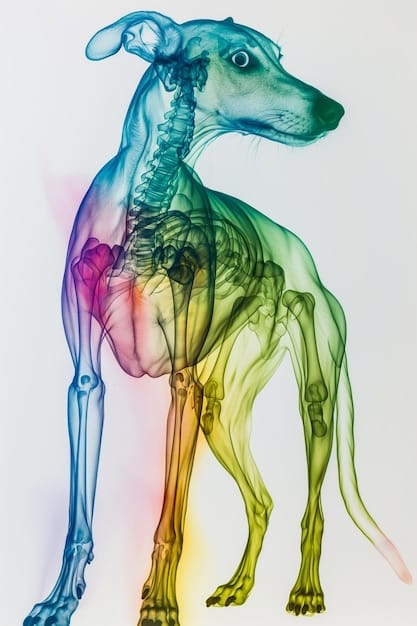Is Grain-Free Pet Food Better? Unveiling the Truth for Your Pet’s Health

Grain-free pet food isn’t inherently better for all pets; while beneficial for pets with grain allergies or sensitivities, it may lack essential nutrients and has been linked to potential health concerns like dilated cardiomyopathy (DCM) in some breeds.
Are you considering switching your pet to a grain-free diet? The popularity of grain-free pet food has skyrocketed in recent years, with many pet owners believing it’s a healthier option. But is it really? Let’s uncover the truth behind it.
Understanding Grain-Free Pet Food
Grain-free pet food is formulated without common grains like wheat, corn, soy, rice, and barley. However, it doesn’t necessarily mean carbohydrate-free or low-carb.
Instead of grains, these formulas often use alternative carbohydrate sources such as:
- Potatoes
- Sweet potatoes
- Peas
- Lentils
These ingredients provide energy and fiber, but their nutritional profiles differ from grains. It’s essential to understand why grain-free options became popular and what they’re meant to address.

Why the Grain-Free Trend?
The grain-free trend emerged as a response to concerns about grain allergies and intolerances in pets. Some pet owners noticed their animals experiencing digestive issues, skin problems, or other allergic reactions, which they attributed to grains in their diet.
Marketing also played a significant role, with manufacturers promoting grain-free diets as being closer to the ancestral diets of dogs and cats and, therefore, healthier.
Misconceptions About Grains
Some common misconceptions about grains include:
- Grains are inherently unhealthy for pets.
- Grains are simply “fillers” with no nutritional value.
- Grain-free diets are always superior for all pets.
In reality, grains can be a valuable source of nutrients, including fiber, vitamins, and minerals. Unless your pet has a diagnosed grain allergy or intolerance, there’s often no compelling reason to eliminate grains from their diet.
Ultimately, understanding what grain-free pet food is and why it has become popular is the first step in determining if it’s the right choice for your pet.
The Benefits of Grain-Free Pet Food (and When It’s Justified)
While grain-free pet food isn’t a universal solution, it can offer specific benefits for some pets. It’s important to consider these potential advantages while keeping overall nutritional needs in mind.
Properly formulated grain-free pet food can provide high-quality nutrition, particularly if your pet has sensitivities or allergies to grains.
Addressing Allergies and Sensitivities
The primary benefit of grain-free food is its ability to alleviate symptoms in pets with grain allergies or intolerances. These symptoms can manifest as:
- Itchy skin
- Digestive upset (vomiting, diarrhea)
- Ear infections
If your veterinarian has diagnosed your pet with a grain allergy through an elimination diet or allergy testing, switching to a grain-free formula can provide significant relief. It’s crucial to differentiate between a true allergy and a sensitivity, as not all adverse reactions to food are allergies.
High-Quality Ingredients
Many grain-free pet foods emphasize the use of high-quality ingredients, such as:
- Real meat
- Poultry
- Fish
These ingredients can contribute to better muscle development and overall health. However, the quality of ingredients varies across brands, so it’s essential to read labels carefully.
Always look for formulas that list a named meat source as the first ingredient and avoid those with excessive fillers or artificial additives.
In summary, the benefits of grain-free pet food are most pronounced when addressing specific health concerns, such as diagnosed grain allergies. Otherwise, a balanced diet with grains can be equally nutritious.
Potential Risks and Concerns of Grain-Free Diets
Despite the perceived benefits, grain-free pet food isn’t without potential risks. These risks have come under increased scrutiny in recent years.
One of the main concerns surrounding grain-free diets is their potential link to dilated cardiomyopathy (DCM), a type of heart disease, in some dogs.
The DCM Connection
The U.S. Food and Drug Administration (FDA) investigated a potential association between grain-free diets and DCM. The investigation focused on diets high in:
- Peas
- Lentils
- Other legumes
DCM is a condition where the heart muscle becomes enlarged and weakened, leading to heart failure. While the exact cause of the potential link wasn’t definitively determined by the FDA, many veterinary cardiologists recommend caution when feeding grain-free diets, especially to breeds predisposed to DCM, such as:
- Golden Retrievers
- Labrador Retrievers
- Boxers
Nutritional Imbalances
Another potential risk is nutritional imbalances. When grains are removed, they need to be replaced with other ingredients to maintain a balanced nutritional profile. If the replacement ingredients aren’t carefully chosen, the diet may lack essential nutrients.
Some grain-free diets may be:
- High in carbohydrates
- Low in essential amino acids, such as taurine
This is why it’s so important to select pet foods that have undergone feeding trials and meet WSAVA guidelines.
Ultimately, while grain-free diets may seem appealing, recognizing the potential risks and consulting with a vet are crucial steps to ensure your pet’s wellbeing.

Decoding Pet Food Labels: What to Look For
Navigating pet food labels can be overwhelming, but understanding the key elements is essential for making informed decisions about your pet’s diet. It’s crucial to go beyond just looking for “grain-free” and examine the overall nutritional content.
When examining pet food labels, you should pay attention to factors such as AAFCO statements, ingredient lists, and nutritional adequacy.
Understanding AAFCO Statements
The Association of American Feed Control Officials (AAFCO) sets standards for pet food nutrition. Look for an AAFCO statement on the label indicating that the food is “complete and balanced” for your pet’s life stage (e.g., growth, adult maintenance, all life stages).
This statement ensures that the food meets the minimum nutritional requirements established by AAFCO. There are two ways pet food manufacturers meet AAFCO standards:
- The “recipe” method: The recipe is formulated to meet AAFCO requirements.
- Feeding trials: The food is tested in feeding trials to ensure it supports the health of the animals that eat it.
Foods that have undergone feeding trials are generally considered more reliably nutritious.
Analyzing the Ingredient List
The ingredient list is organized in descending order by weight. This means the first few ingredients make up the bulk of the food.
Ideally, you want to see a named meat source (e.g., chicken, beef, salmon) as the first ingredient. Also, pay attention to:
- The presence of artificial additives, colors, or preservatives.
- The types of carbohydrates used (even in grain-free formulas).
- The inclusion of essential vitamins and minerals.
Many people prefer to avoid artificial compounds, but even if you don’t it’s still important to know what you feed your pet is safe.
Nutritional Adequacy
Beyond the ingredient list, carefully review the guaranteed analysis, which provides information on:
- Protein
- Fat
- Fiber
- Moisture
Compare these values to the recommended levels for your pet’s age, breed, and activity level. Consult with your veterinarian to determine the appropriate nutritional profile for your pet’s specific needs.
In conclusion, decoding pet food labels involves more than just identifying whether a food is grain-free. It requires a thorough understanding of AAFCO statements, ingredient lists, and nutritional adequacy to ensure your pet receives balanced and appropriate nutrition.
Consulting with Your Veterinarian: A Personalized Approach
For many pet owners, the best path to decide if their pet should eat grain-free pet food is to get assistance from a veterinary professional.
Veterinarians can offer tailored advice based on your pet’s unique health profile, lifestyle, and dietary needs.
A veterinarian can use physical examinations and diagnostic tests to find any underlying health issues.
Assessing Individual Needs
Every pet is different, and what works for one may not work for another. Factors to consider include:
- Age
- Breed
- Activity level
- Existing health conditions
Your veterinarian can assess these factors and make personalized recommendations regarding diet. They can also help identify potential allergies or sensitivities through elimination diets or allergy testing.
Addressing Specific Health Concerns
If your pet has specific health concerns, such as:
- Diabetes
- Kidney disease
- Obesity
Your veterinarian can recommend a therapeutic diet tailored to manage these conditions effectively. Sometimes, a grain-free diet may be part of the overall treatment plan, but it’s essential to have veterinary guidance to ensure it’s appropriate.
Consulting with your veterinarian will help you address any health problems your pet can have.
Monitoring and Adjusting the Diet
Once you’ve chosen a diet, your veterinarian can help monitor your pet’s response and make adjustments as needed. This ongoing assessment is crucial to ensure the diet continues to meet your pet’s evolving needs.
Regular check-ups can help detect any adverse reactions or nutritional deficiencies early on. Your veterinarian can also provide guidance on portion control and weight management.
In summary, consulting with your veterinarian is an indispensable step in making informed decisions about your pet’s diet. Their expertise ensures a personalized approach that takes into account your pet’s unique needs, health concerns, and lifestyle.
Making the Right Choice for Your Pet
Choosing the right food for your pet involves weighing the pros and cons of various dietary options. Ultimately, the best choice depends on your pet’s individual needs and health status.
Consider your pet’s potential allergies, overall nutrients, and how the decision affects your pet overall.
Evaluating the Evidence
When considering a grain-free pet food, carefully evaluate the available evidence. Be wary of:
- Marketing claims that lack scientific backing.
- Anecdotal evidence that isn’t supported by veterinary professionals.
Instead, focus on objective information from reputable sources, such as:
- Veterinary nutritionists
- Peer-reviewed studies
- AAFCO guidelines
A balanced perspective will help you make an informed decision based on facts rather than hype.
Considering Alternatives
If you’re concerned about grains but not convinced about grain-free diets, explore alternative options such as:
- Limited ingredient diets
- Novel protein diets
- Diets with ancient grains
Limited ingredient diets contain a smaller number of ingredients, which can help identify potential allergens or sensitivities. Novel protein diets use protein sources that are uncommon in pet food, such as venison or rabbit, to minimize the risk of allergic reactions.
Diets with ancient grains, such as quinoa or sorghum, may offer nutritional benefits while still being well-tolerated by most pets. Always consult with your veterinarian before making significant changes to your pet’s diet.
Long-Term Health
The ultimate goal is to ensure your pet’s long-term health and well-being. This involves:
- Choosing a diet that meets their nutritional needs
- Monitoring their response to the diet
- Making adjustments as needed with veterinary guidance
Remember that diet is just one aspect of overall health. Regular exercise, preventive care, and a loving environment also play crucial roles in your pet’s quality of life.
In conclusion, making the right choice for your pet involves careful evaluation, consideration of alternatives, and a commitment to their long-term health. With thorough research and professional guidance, you can provide your furry friend with a diet that supports their optimal wellbeing.
| Key Point | Brief Description |
|---|---|
| ✅ Allergies | Grain-free food is beneficial for pets with diagnosed grain allergies. |
| ❤️ DCM Risk | Some grain-free diets are linked to dilated cardiomyopathy (DCM) in dogs. |
| 🐾 Ingredients | Check the ingredient list; named meat should be the first ingredient. |
| 🩺 Vet Advice | Consult your veterinarian for personalized dietary recommendations. |
Frequently Asked Questions
▼
No, grain-free food is not inherently healthier for all pets. It’s only beneficial if your pet has a diagnosed grain allergy or sensitivity. Otherwise, a balanced diet with grains can be equally nutritious.
▼
Common signs include itchy skin, digestive upset (vomiting, diarrhea), and ear infections. If you suspect your pet has a grain allergy, consult with your veterinarian for proper diagnosis and treatment.
▼
Look for an AAFCO statement, a named meat source as the first ingredient, and a balanced nutritional profile. Also, pay attention to artificial additives and the types of carbohydrates used.
▼
While the FDA investigated a potential link between grain-free diets and DCM, the exact cause is still under investigation. Diets high in peas, lentils, and other legumes have been implicated.
▼
Consult with your veterinarian for personalized recommendations. They can assess your pet’s individual needs and health status. Regular check-ups and monitoring are also essential to ensure ongoing nutritional adequacy.
Conclusion
In conclusion, the truth about grain-free pet food is that it’s not a universally superior option. It offers benefits for pets with grain allergies or sensitivities but may pose risks for others. Consulting with your veterinarian, carefully evaluating pet food labels, and considering your pet’s individual needs are crucial steps in making an informed decision that supports their overall health and well-being.





